Sky's the Limit
"Using it to Great Effect"Original Article by Catherine Page
Photographs by John Curgenven
"Article first featured in Olympus User Magazine"
THE SKY IS A CONTINUAL SOURCE of inspiration for photographers. Whether you have a full hemispherical view from the fens or a foreground of rocky terrain in the alps, the sky can be a hugely impressive feature.
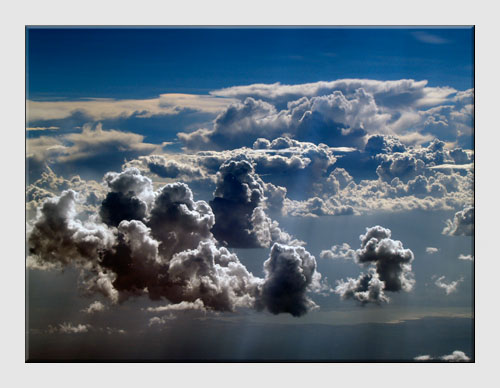
The sky can function as the main subject of the shot, play a supportive role to a dominant foreground or act as an effective counterpart element…
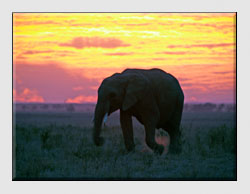
1The sky as the main subject
Incorporating silhouettes in your photographs is an interesting way of drawing attention to the sky and adding depth to an image.
In this photograph of an African elephant at sunrise, the dark, simple shape of a lone elephant offers a dramatic contrast to the colourful, early morning sky and immediately draws the eye of the observer to the sky itself. From time to time it’s okay to break the general rule of not positioning the horizon line in the centre of your image – in this instance its position helps to convey the majesty of the elephant in its natural setting and creates an a sense of immediacy between the viewer and the scene.
To create an image like this you need to set the exposure correctly.
Most cameras allow you to point the camera so the sky fills the viewfinder or screen. Depress the shutter release button halfway down to lock the exposure and focus, then lower the camera to view the intended scene before fully depressing the shutter release button to take the shot. (Your camera manual will give you more information about this).
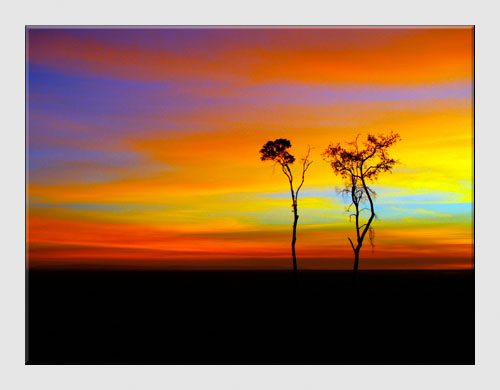
Venture out before dawn to witness a spectrum of amazing colours as the sun rises above the horizon. The clear early morning air is perfect for crisp, clean images, whereas the evening air can sometimes be hazy. In the photograph above, the brilliant colours of the dawn in East Africa have been accentuated by the silhouettes of two isolated trees.

The red hues of the sky as the sun goes down, as shown in the image on the left, give photographers more opportunity to take beautiful shots. When photographing a sunset, set up your frame with the sun just out of shot and then quickly take the photograph without looking directly at the sun so as not to risk damaging your eyes.
The most interesting dawn, sunrise and sunset shots include part of the horizon and some foreground detail to create a sense of perspective.
Preparation is key – make sure you plan your shot early as you are limited by the time available. Experiment with different foregrounds and position the sun on different sides of the frame to make your shots more interesting, varying the orientation between portrait and landscape to see which you prefer.
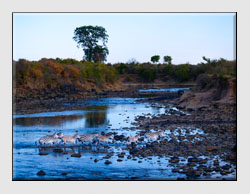
2The sky in a minor role
In this photograph of the zebras crossing the river, the sky plays a supportive role to the foreground. Although the sky is not the main focus here, it is still an important component of the shot, giving the picture depth and adding emphasis to the foreground.
In landscape shots, the difficulty lies in achieving an adequate exposure of detail across a high-contrast situation – from deep shadow (the foreground) to light highlight (the sky). One way to overcome this is to take at least three photographs of the same scene, exposing one shot for the foreground, one for the sky and one in between.
The shots need to be from the exact same position, each one immediately after the other – so make sure you use a tripod – with the same focal length and focusing distance.
There is no film wastage in digital photography, so take advantage of the moment and take as many shots as you like – it might be a once-in-a-lifetime opportunity. Once you are back at home, you can use imaging software to merge the photos together or lighten the darker areas. Perfect exposure is not always possible; it is better to underexpose a little rather than to overexpose, as you can modify your images at a later date with software like Olympus Master (which may have been supplied free with your camera), maximising their potential and thus your photographs.
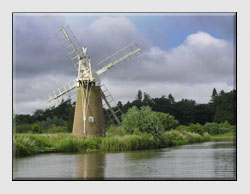
3In equal measures
In the photograph of the windmill, the sky is equally as important as the foreground. The windmill is the subject of the image, but the sky is also a point of interest with its sombre clouds and flash of blue.
In this scenario, it would be a good idea to take two shots, one exposed for the sky and one slightly underexposed.
The sky is a variable affected by the seasons and weather. A stormy sky can make a shot interesting, creating a moody ambience through a range of tones, bringing the landscape to life. Large, ominous cumulonimbus clouds associated with heavy precipitation and thunderstorms are particularly dramatic through the lens.
On a sunny day, look out for unusual cloud formations, strange patterns and exciting colour combinations, such as pink and blue or red and orange. Fluffy white clouds against a bright blue sky are always appealing, especially when backlit by the sun.
Filter systems
Owners of Olympus digital SLR cameras and more advanced all-in-one cameras can use external filters and make internal adjustments to cope with demanding situations or to enhance an image.
A graduated neutral density filter is ideal for high contrast situations to hold back the light in the brighter section, thus reducing the contrast. Graduated filters come in a variety of colours, but a grey filter, being neutral in colour, will not have an effect on the colour tone of the image. Polarising filters are also available, which enhance the contrast and colours of images in sunlight.
If shooting in black and white, the contrast of the sky can be altered by using coloured filters. A selection of these are built into Olympus digital SLRs such as the E-500, they can be found on the following menu: PICTURE MODE > MONOTONE > B&W FILTER.
Then choose the colour you want: neutral, yellow, red or green.
More advanced image enhancement and manipulation can be achieved by upgrading from Olympus Master software to Olympus Studio.
© Olympus UK
Click here for more Tutorial Articles by OM Systems
(formerly Olympus Cameras).
Return from Sky's the Limit to the Photography Tutor page.











New! Comments
Have your say about what you just read! Leave me a comment in the box below.